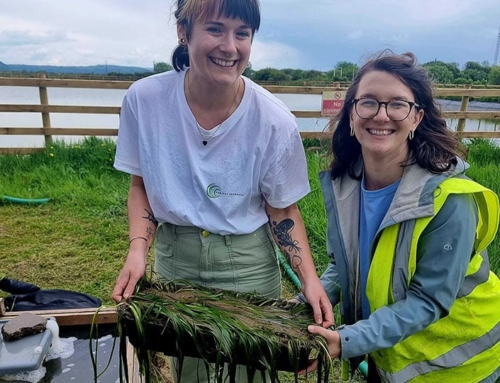When we think about important habitats, we often imagine a coral reef, a tropical rainforest or maybe the African savannah. But there are many less celebrated, often overlooked ecosystems that are equally deserving of our attention: these habitats help regulate our climate, stock our food supplies and supply us with clean water, and are also home to some of the most beautiful and diverse wildlife on the planet.
It’s a cold crisp February morning in Pembrokeshire, Wales. Forty volunteers from far and wide gather with villagers and scientists in Dale Bay to do something that’s never been done in the UK on this scale.
They are planting seagrass seedlings, and not just a few. They are planting 750,000 seedlings as part of the country’s biggest ever seagrass meadow restoration project, to protect biodiversity, climate, and people.
Seagrass is a marine flowering plant that exists in most of the world’s oceans and seas, stretching from northern Russia to New Zealand’s South Island. These plants evolved from terrestrial grasses over 70 million years ago. They often grow in vast patches, called seagrass meadows, which are true hotspots of life. In the UK, a seagrass meadow hosts 30 times more animals than an adjacent habitat.
A century ago, seagrass meadows covered the entirety of Dale Bay. However, pollution, coastal development, and damage from boat propellers and chain moorings greatly damaged them to the point where they largely disappeared from Dale Bay and the rest of the UK.
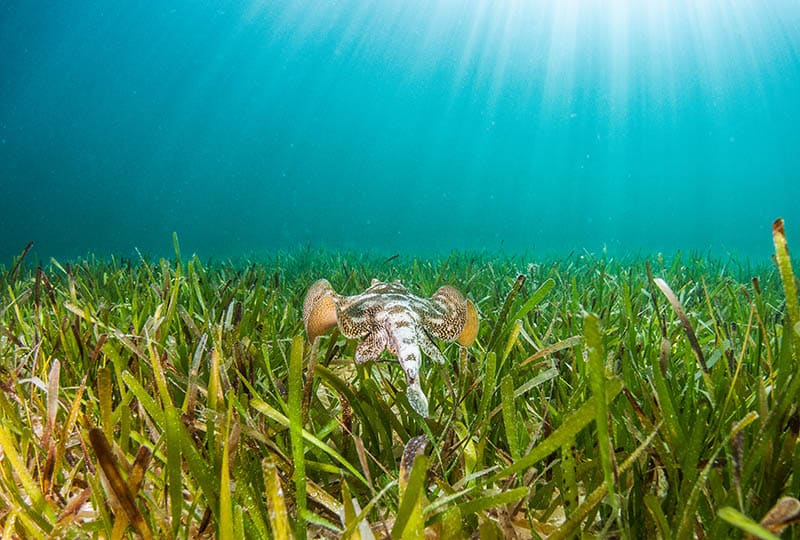
© Shutterstock
The United Kingdom has lost up to 92 per cent of its seagrass meadows in just the last century.
This trend is not limited to the UK, or even the European region. Globally, seagrass meadows are on the decline. We’ve already lost an estimated 29 per cent of known seagrass meadows, and this trend is accelerating. Seagrass meadows around the world are being lost at a rate of around 7 per cent each year, or an area equal to two football fields every hour. This makes seagrass meadows one of the world’s most threatened ecosystems, alongside coral reefs, mangroves, and tropical rainforests.
This global trend should worry us. Any loss of these beautiful underwater meadows is a tragedy in its own right, but the decline in seagrass habitats also has significant impacts on biodiversity, climate, local economies and people. That is because seagrass meadows provide several so-called ‘ecosystem services’, contributing to the well-being and health of human and non-human animals.
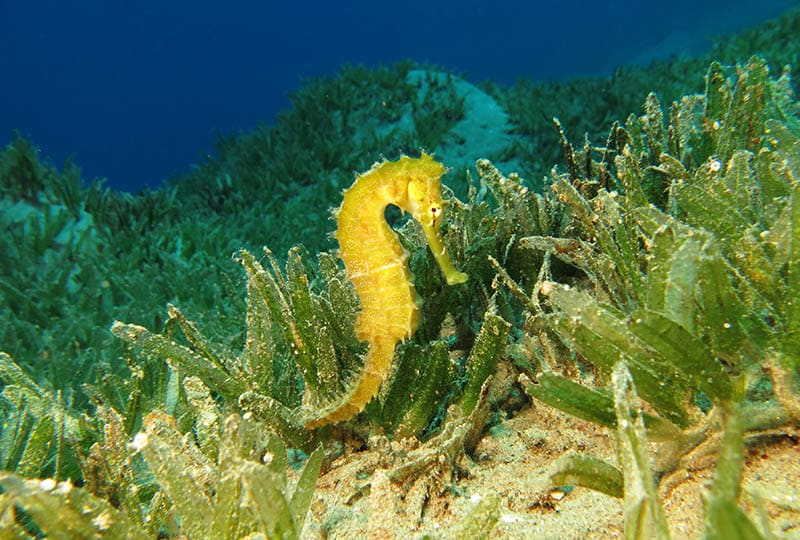
© Shutterstock
Seagrass services – from climate mitigation to mattress filling
Humans have benefitted from seagrasses for a long time. They have been used to fill mattresses and pillows in 16th century Italy; insulate roofs in Spain; thatch roofs in Scotland; drive agricultural productivity throughout the North Atlantic; alleviate skin diseases and leg pain; and feed farm animals around the world.
Seagrass meadows are supporting 20 per cent of the world’s biggest fisheries. They absorb atmospheric carbon up to 35 times faster than rainforests. Seagrasses trap, store, and recycle sediments and nutrients – acting as a filter for coastal waters, enhance the fish productivity of nearby coral reefs. They also provide habitat, food, and shelter to thousands of fish, bird, and invertebrate species, and provide a crucial food source for many endangered species, such as dugongs, manatees, and green turtles.
These many ecosystem services are estimated to contribute a whopping USD 1.9 trillion to the global economy each year. Seagrass meadows clearly play a globally important role, despite occupying only 0.2 per cent of the seafloor.
By conserving and restoring seagrasses, we can therefore protect biodiversity, support human life and prosperity, and fight the climate crisis, all in one go. For these reasons, conservation efforts to protect the remaining healthy seagrass meadows and restore degraded ones are slowly picking up pace, and seagrasses are starting to get the attention they deserve and urgently need.
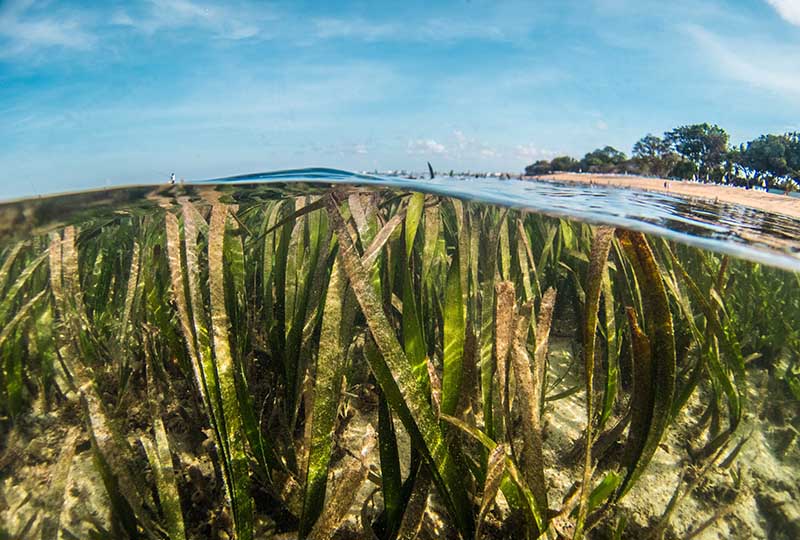
Credit: Benjamin L Jones / Unsplash
Generating information for change
However, one major hurdle for effective seagrass protection is the glaring gap of reliable information on the distribution and health of seagrass meadows. Governments and research institutions often lack the proper resources to generate and manage the scale of global and local seagrass information needed to drive effective conservation and restoration work.
One possible solution to this is citizen science. Citizen science is when members of the public participate in scientific research, creating a collaborative network of non-scientist volunteers, such as identifying species seen on trail cameras or recording birds in your garden. This tool has recently been taken up to inform mostly land-based conservation, but also holds the potential to generate an incredible amount of information on seagrasses around the world.
SeagrassSpotter is one such tool. Launched in 2016 by Synchronicity Earth partner Project Seagrass, a UK-based seagrass research and conservation organisation, this smartphone app enables users to spot seagrass, upload a geo-tagged photograph, and contribute to an immense and ever-growing data set on seagrass distribution and health. So far, the app has recorded just shy of 4,000 seagrass sightings.
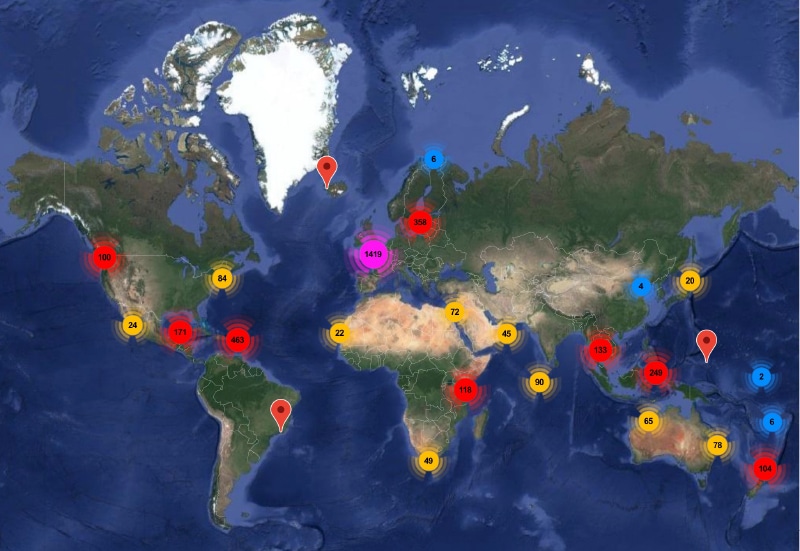
Global Distribution of seagrass sightings and uploads by SeagrassSpotter users. Image: SeagrassSpotter
The information generated by SeagrassSpotter and its users can then be used by decision-makers and conservation practitioners to inform the management of coastal development plans, seagrass restoration projects, or marine protected area management plans, and drive positive change in the world’s coastal areas.
The true beauty of this solution is that anybody can contribute to it, all you need is a smartphone and access to a coast.
In an increasingly volatile future, healthy seagrass meadows could be one of our biggest allies, to create and secure a resilient ocean, and thus a resilient climate. While citizen science is no panacea to the seagrass crisis and needs to be combined with conservation action and political will, it clearly has a crucial part to play in reversing the trend of seagrass meadow loss around the world.



